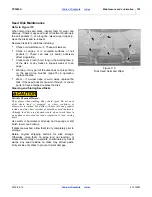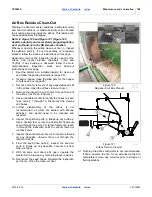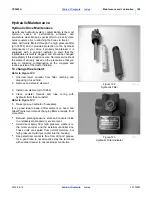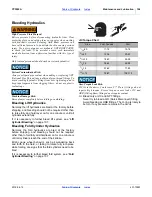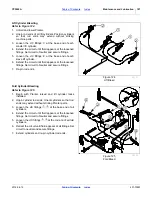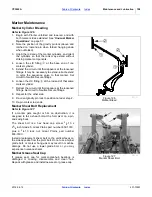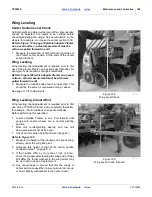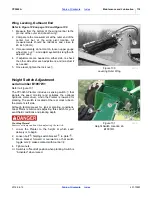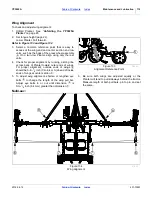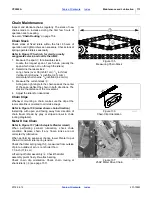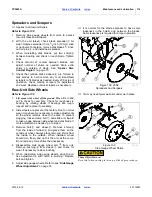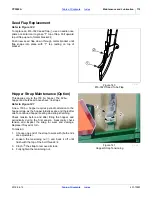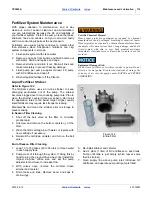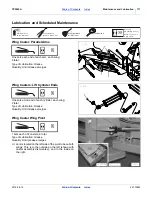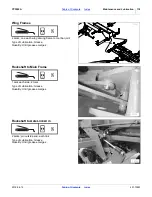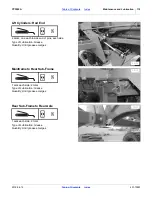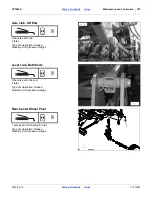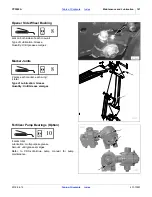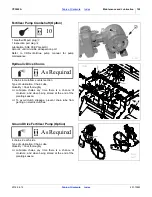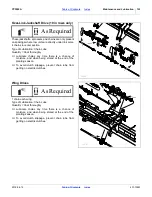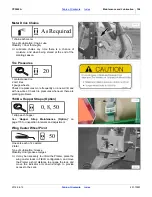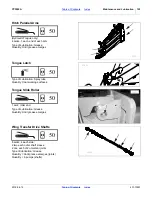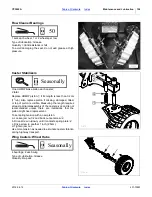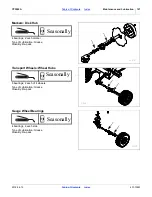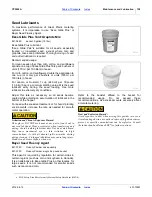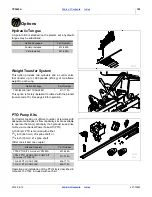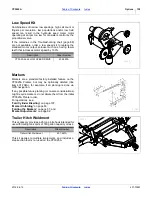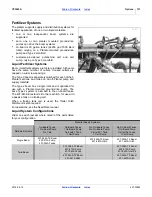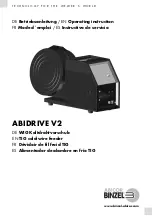
2019-06-12
401-705M
YP3025A
Maintenance and Lubrication
116
Fertilizer System Maintenance
With proper attention to maintenance, end of day
clean-out, end of season clean-out and winterization,
you can substantially increase the life and reliability of
your fertilizer system. Protect the pump, clean the tanks,
strainers, lines and nozzles, and you can avoid costly
and time-consuming repairs at the next season.
Fertilizers are usually highly corrosive to metals other
than stainless steel. Suspension fertilizers can clog
system components in storage.
1. Flush entire system with clean water.
2. Remove end caps from booms and flush booms out
with water. Drain and replace end caps.
3. Remove strainer and drain it out. Drain all lines and
tanks completely to prevent freezing damage.
4. Flush pump per pump supplier manual. Fill pump
with RV antifreeze and cap off.
5. Wash all spilled fertilizer off the Planter.
Liquid Fertilizer Strainer
The fertilizer system uses an in-line strainer to keep
damaging particulates out of the pump. The strainer
becomes clogged over time, reducing pump rate. Plan to
clean the strainer several times per season. Don’t wait
for application rates to fall below target. Higher quality
liquid fertilizers may require less frequent cleaning.
Disassemble and clean the strainer prior to storage to
prevent caking.
In Season Filter Cleaning
1. Shut off the ball valve at the filter, to minimize
product spill.
2. Unscrew and remove the bottom canister of the
filter.
3. Wash the filter cartridge with water, or replace with
new cartridge if necessary.
4. Reinstall the cartridge, canister, and turn on the ball
valve.
End of Season Filter Cleaning
1. Load 10 to 15 gallons (40 to 60 liters) of clean water
in each supply tank.
2. Pump most of it through the system. If doing this by
hand-turning the ground drive wheel, first install the
largest drop-line orifice size, and set the pump
adjuster to maximum, to increase flow.
3. With valves open, remove the canister. Clean
strainer and canister.
4. Drain tanks and lines. Remove boom end-caps to
drain wings.
5. Re-install strainer and canister.
6. Add 2 pints (1 liter) of RV antifreeze to each tank.
Pump until tank is just empty (which leaves some
fluid in strainer).
7. Open supply line above pump inlet. Introduce RV
antifreeze, and operate pump until pump is filled.
Possible Chemical Hazard:
Wear proper protective equipment as required by chemical
manufacturer. Avoid prolonged breathing of chemical fumes.
Wear respirator as required by chemical manufacturer. Some
chemicals will cause serious burns, lung damage, and death.
Avoid contact with skin or eyes. Seek medical assistance
immediately if accident occurs. Know what to do in case of an
accident.
Equipment Damage Risk:
Do not leave fertilizer or fertilizer residue in pump. Do not
allow air to enter pump. Even for short periods of storage, the
entrance of air into the pump causes RAPID and SEVERE
CORROSION.
Figure 142
In-line Filter
31322
1
2


